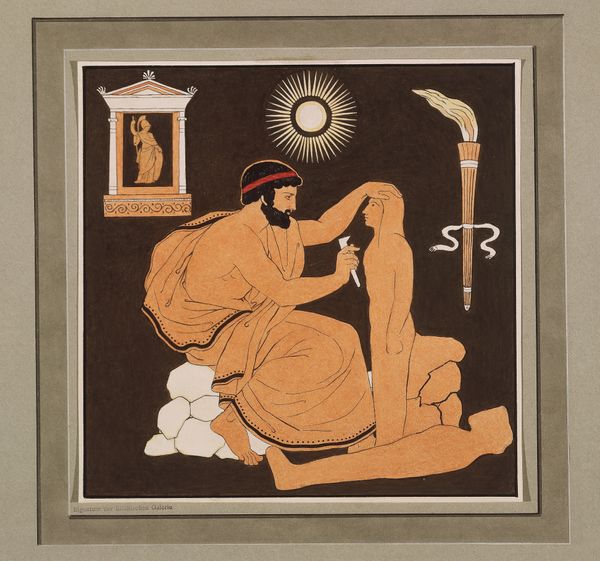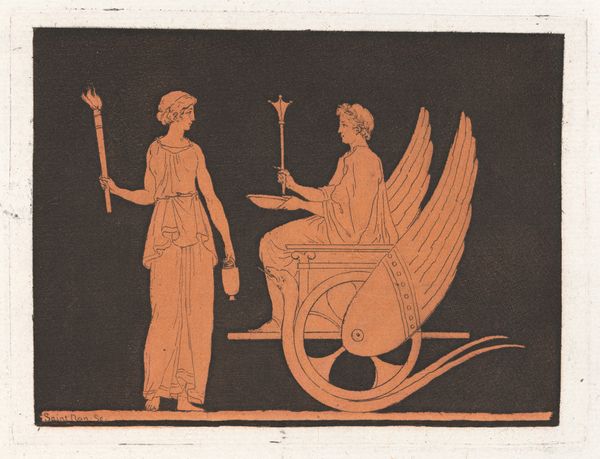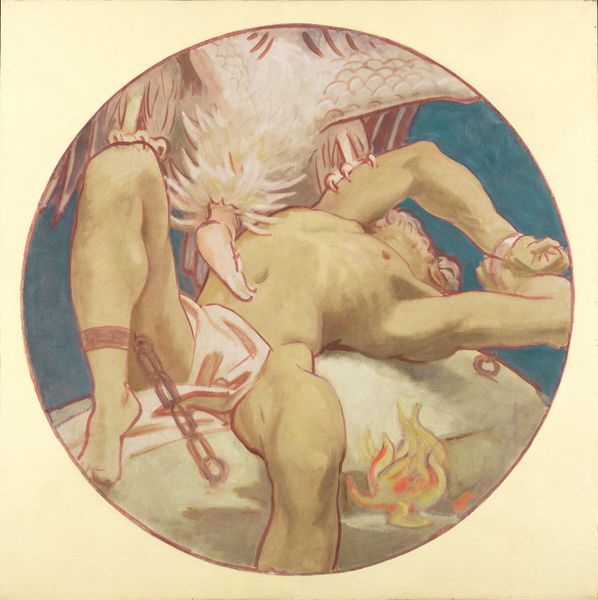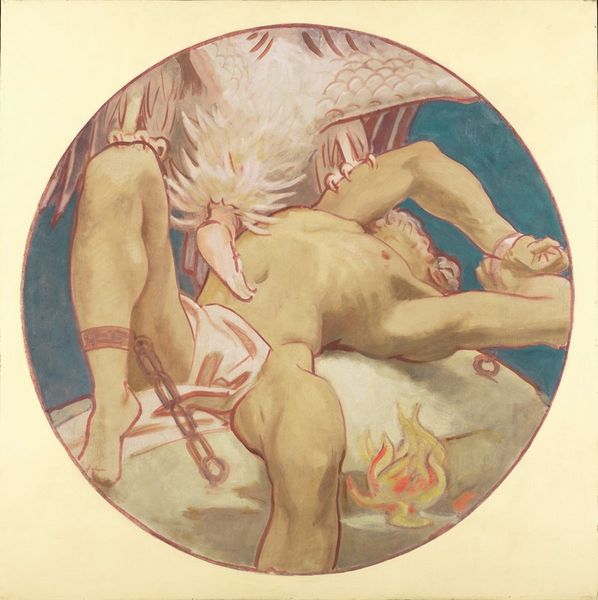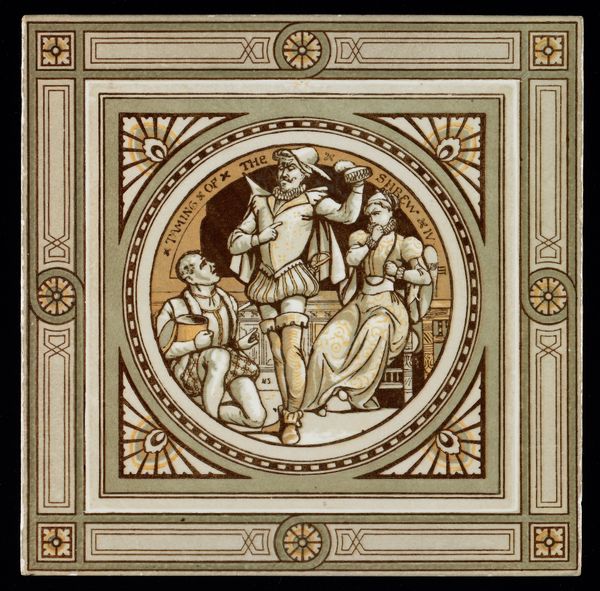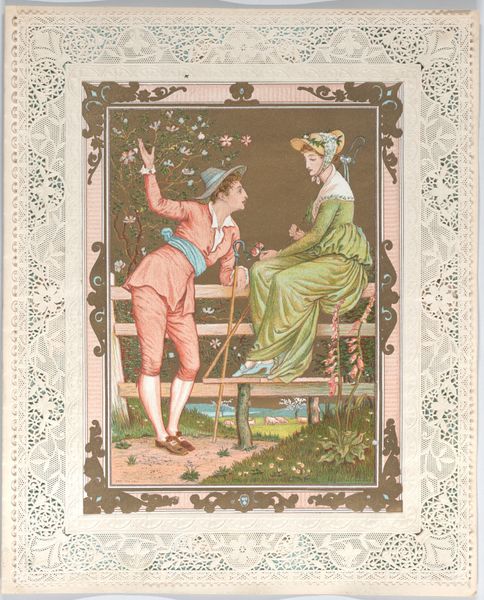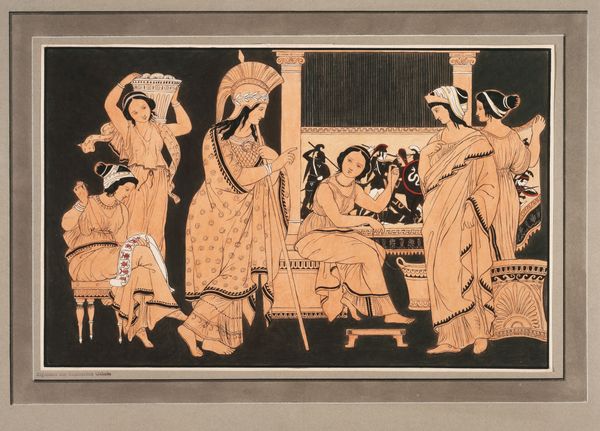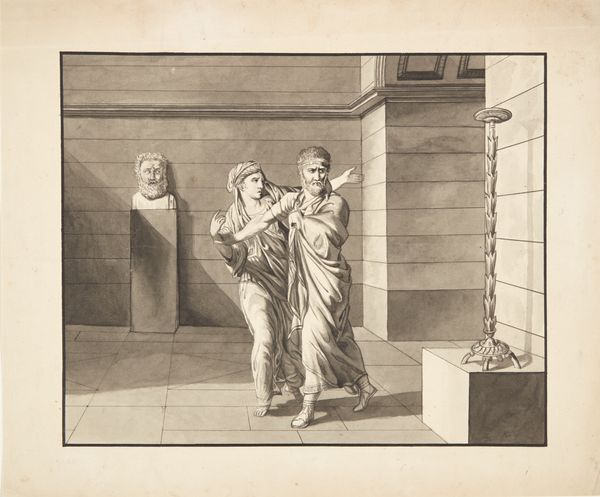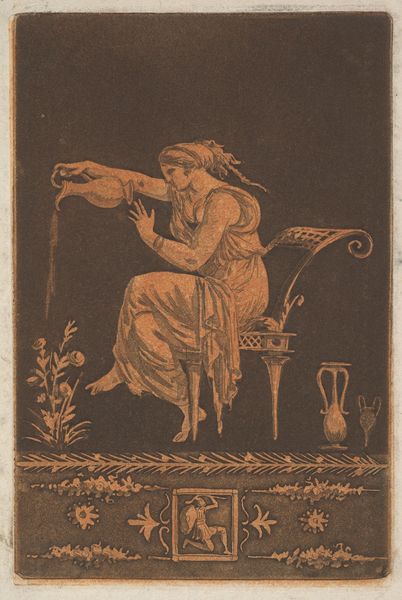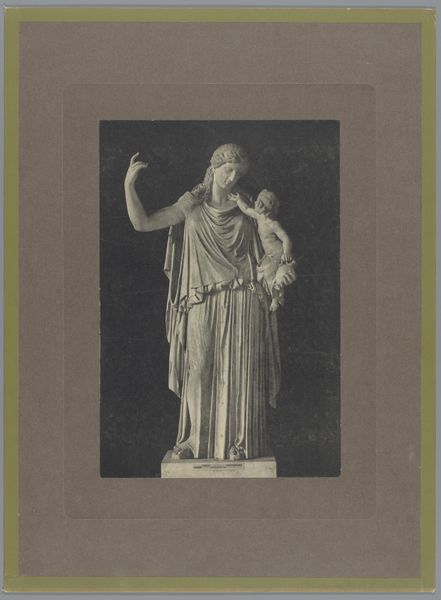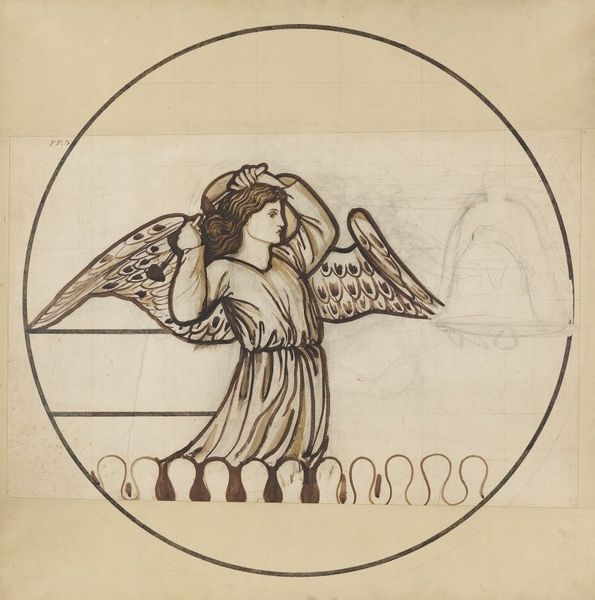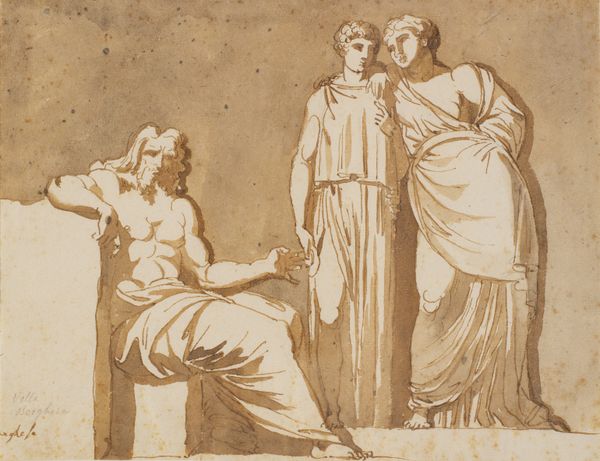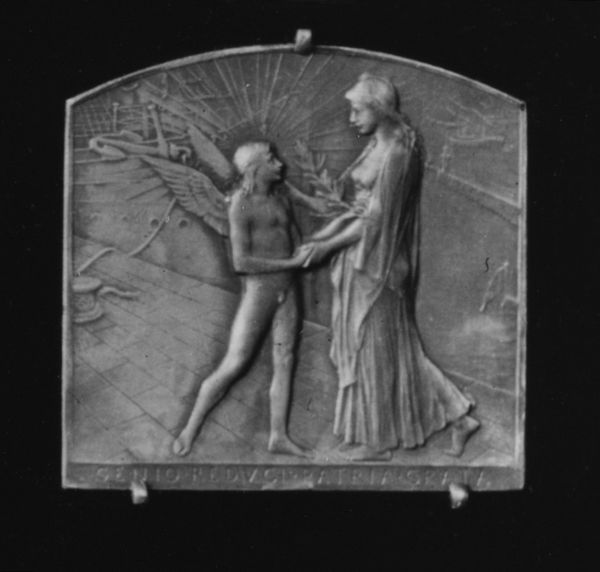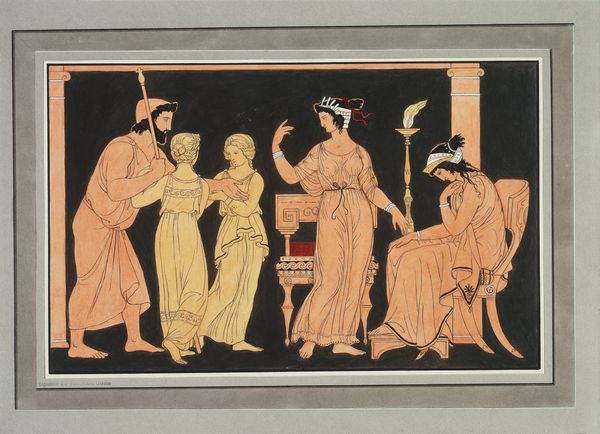
drawing, paper, ink
#
drawing
#
neoclacissism
#
toned paper
#
16_19th-century
#
narrative-art
#
classical-realism
#
figuration
#
paper
#
ink
#
german
#
classicism
#
ancient-mediterranean
#
history-painting
Copyright: Public Domain
Curator: This drawing, housed here at the Städel Museum, is titled "Daidalos legt Ikaros einen Flügel an," or "Daedalus Attaching a Wing to Icarus," completed around 1832 by Philipp Veit. Editor: It feels strangely muted for such a dramatic subject! The toned paper and restrained use of ink give it a dreamlike quality. The black background really makes the ochre figures and bright white wings pop, doesn't it? Curator: Indeed. Veit's meticulousness is striking. Look at the textures he achieves with simple lines. We see Daedalus, carefully positioned to provide his son Icarus one of two sets of artificial wings created to escape the island of Crete, though the drawing material itself provides some fascinating commentary on 19th century modes of art production as well as a window to revisit antiquity. Editor: It’s incredible how the image continues to resonate. I see Daedalus as the concerned, almost resigned parent, carefully securing the symbol of ambition to Icarus, knowing full well the dangers. The wings immediately signify aspiration, freedom, but also, given the narrative, a tragic hubris. The bright sun almost seems to be calling Icarus to his fate. Curator: The artist’s Neoclassical approach to the myth emphasizes structure and clear forms, however, I am more interested in how the artist engages with traditional processes in ways that are similar to the art he references: through handcraft and the unique trace of his time period Editor: Precisely! While he uses the aesthetic language of classicism, the choice of such an emotionally loaded moment injects real drama, adding another layer to a tale so central to understanding man's reach and grasp. I’m curious what other psychological readings a visitor might arrive at. Curator: The piece presents many opportunities to explore and unpack the historical context of making the artwork through handcraft, touching on larger production of artworks, especially during that historical moment. Editor: The drawing’s elegant simplicity is deceptive; it quietly amplifies the emotional complexity of a timeless cautionary tale. Curator: I agree! Studying the relationship of ink to paper gives a sense of the past, and a better understanding of both material and process, creating further depth when considering its subject matter.
Comments
No comments
Be the first to comment and join the conversation on the ultimate creative platform.
